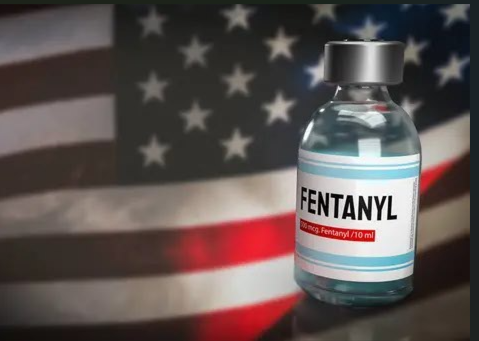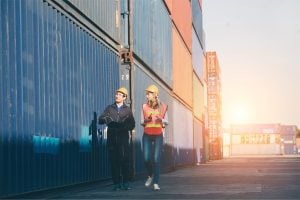Securing U.S. Borders: CTPAT's Role in Fighting the Fentanyl Epidemic
In recent years, the United States has been grappling with an alarming surge in the fentanyl and opioid crisis, casting a somber shadow over...
2 min read
Eric Kaczorowski : Aug 12, 2024 3:28:39 PM

Every day, people worldwide are forced against their will to work or provide services through the use of force, fraud, or coercion. This is known as Forced Labor, and it affects an estimated 27.6 million people worldwide, according to the most recent 2021 report by the International Labor Organization. Forced Labor is a violation of basic human rights. While it is primarily a global issue, it also exists within our own country, with approximately 50,000 people in the United States subjected to Forced Labor. U.S. Customs and Border Protection acknowledges this issue and is determined to combat it by any means necessary. CBP is the sole U.S. government agency, and one of the few globally, empowered with legal authority to enforce action against goods produced with Forced Labor, thus preventing their entry into domestic commerce. CBP enforces laws against Forced Labor trade under 19 U.S.C. 1307. This statute defines Forced Labor as any work or service extracted from an individual under threat of penalty for non-compliance, and where the worker does not offer their services voluntarily. This encompasses forced or indentured child labor.
If you are unsure what Forced Labor looks like, The International Labour Organization (ILO) has identified 11 indicators of Forced Labor:
CTPAT Members are required to implement a documented social compliance program that, outlines how the company verifies that goods imported into the United States are not sourced, mined, produced, or manufactured, either wholly or partially, using prohibited forms of labor, such as Forced Labor, prison labor, indentured labor, or child labor.
If you are not yet CTPAT certified, CBP encourages members of the trade community to rigorously examine their supply chains to ensure compliance. By pinpointing companies or entities within your supply chain that might be implicated in Forced Labor and severing business ties with them, you can significantly impact their financial resources, thereby weakening their ability to perpetuate control over their victims.
High-risk goods linked to Forced Labor include:
According to the most recent CBP Forced Labor Statistics, Malaysia, Vietnam, Thailand, and China are the top four countries responsible for the highest dollar value of goods produced by forced labor and shipped to the United States.
One area of heightened concern for Forced Labor is the Xinjiang Uyghur Autonomous Region of the People's Republic of China. The United States implemented The Uyghur Forced Labor Prevention Act (UFLPA) in June 2021. The UFLPA prohibits entry of goods produced, mined or manufactured by Forced Labor into the United States under Section 307 of the Tariff Act of 1930. For more information, please visit CBP’s UFLPA webpage at https://www.cbp.gov/trade/forced-labor/UFLPA?language_content_entity=en.
If you suspect that Forced Labor may be present in your supply chain, there are steps you can take. Anyone suspecting that merchandise produced by Forced Labor is being imported into the United States can report their suspicions to any Port Director or CBP by using the e-Allegations Online Trade Violation Reporting System at https://eallegations.cbp.gov/s/?language=en_US. Upon receipt of an allegation or self-initiated investigation, CBP will conduct an evaluation the merchandise may be subject to exclusion and/or seizure.
Veroot can assist your company with creating and implementing a CTPAT compliant Social Compliance Policy against Forced Labor, as required by CTPAT. In addition, Veroot can provide employee and business partner training on how to identify indicators of Forced Labor via our CTPAT SOP Training module. We also design a country risk level map tailored to the countries of your company's business partners. The map analyzes current world data on Terrorism, Crime, Forced Labor, and related factors, then complies the data into a business climate scores based on the level of risk. Contact Veroot for more information on how Veroot can assist your company with CTPAT Forced Labor compliance.

In recent years, the United States has been grappling with an alarming surge in the fentanyl and opioid crisis, casting a somber shadow over...

Are you an importer, or consolidator? If so, the CBP requires that you maintain a customs bond to get CTPAT certified. These bonds come in different...

3 min read
Ever wonder what a CTPAT Tier rating is and how you get it? In this article, we explain the difference between the CTPAT Tiers and how your company...